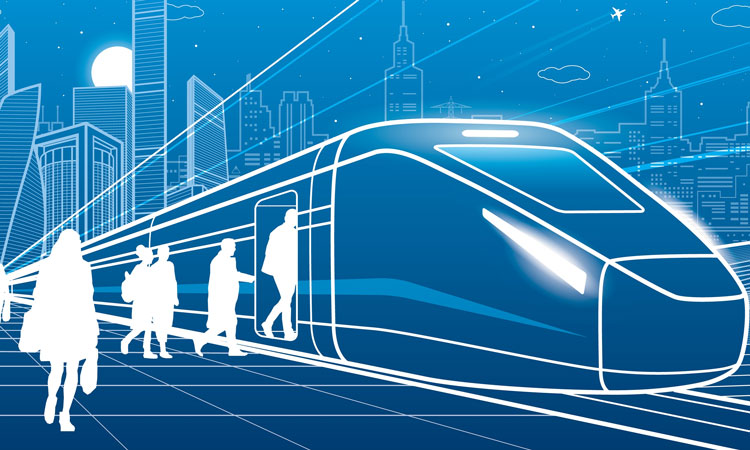Major projects, local partners: Why industry must get better at delivering social value on major projects
Posted: 13 April 2021 | David Wilson | No comments yet
All too often, local residents find themselves fighting major developments in their neighbourhood. Delivering social benefit on major projects is hugely important, but why has it sometimes been hard to collaborate with locals, and how can the UK rail industry improve this? David Wilson, Principal Engineer at Atkins, explores further.


Once only a minor consideration, delivering local benefits has risen to become one of the most vital elements of major project delivery. Major schemes are increasingly conscious of ensuring long-term, demonstrable benefits to the local communities around proposed infrastructure schemes. Since January 2021, a new policy note – PPN 06/20 – has entrenched this focus and conscience, which explicitly requires buyers to take social value into account when recruiting partners. Major schemes such as East-West Rail (EWR) and High Speed 2 (HS2) are being challenged to be more adept at assessing, delivering, and demonstrating real benefits to the localities on which their schemes impact.
However, to achieve these outcomes, the rail industry must learn to harness the power and knowledge of local small to medium enterprises, organisations, and communities. There should be a holistic view of social value from the beginning, and not at the end, once all the major decisions have already been taken. On major projects with a huge array of stakeholders, being collaborative is even more important. To fully unlock the full potential of major projects, industry must be better at coordinating a collaborative approach right from the start.
Think locally, act responsibly
The increased focus on social value reflects the growing complexity of major projects, evident since the 1960s and 1970s. After amassing experience and data revealing the impact of local schemes on the environment and its communities, major projects gradually became more cognisant of the complexities surrounding their development. Where once major projects had single, straightforward aims – to provide a faster network, to alleviate congestion, and so on – now there is a recognition of their wider responsibilities and potentials.
No longer are major projects solely defined by a simplistic goal, nor carried out by single clients, operating unilaterally. Having understood the problems caused by this overly reductive, and inflexible approach, schemes are now held to much higher standards. As well as their main objective, they are expected to enable local development, have lower carbon footprint, increase biodiversity, deliver social value, and more – all of which demands the presence of more partners. Multi-headed agencies are formed, the schemes themselves becoming more complex in tandem with their outputs.
Although this complexity is more demanding, ultimately, it is good news – not just for neighbours to such projects, but for the country as a whole. A greater understanding of a major project’s impact demonstrates a better understanding of how the scheme will impact people and planet in reality. With the right approach and partnerships, major schemes can avoid causing unnecessary harm and maximise the benefits they offer to everyone.
Benefits across the lifecycle
To understand exactly how major projects like East-West Rail (EWR) can benefit local communities, it’s important to consider the different benefits across the scheme’s lifecycle.
To understand exactly how major projects like EWR can benefit local communities, it’s important to consider the different benefits across the scheme’s lifecycle. Although most of the value is enjoyed after the project is complete, social impact depends on how the rail industry approaches the early stages. Local communities must be consulted from the outset, so that the design can be connected meaningfully to the local community and its needs, and provide local employment opportunities. For example, during the construction phase, local benefits can be shared through apprenticeships, sub-contraction to local SMEs and getting locals involved to help bring the project to life. On HS2 and Crossrail, there have been some encouraging developments of this kind, but more still needs to be done. Opportunities must be optimised during the initial feasibility and business case phase, when the most benefit can be accrued for the least cost. When local needs are integrated early on, the design can be intelligently shaped to meet those needs, increasing the project’s chances of winning support and success further down the line.
Connecting with local organisations and listening to local views takes time and effort, but it need not be costly – in fact, it can save major projects a lot of money. Properly consulting locals can flag important problems before they arise, enabling these to be sidestepped in the design, rather than having to adapt the project later on (and at far greater expense). Partnering with local SMEs (even when partners have in-house skills) can empower the project with vital local knowledge, potentially saving companies from urgent local recruitment campaigns to help undo damage deeper into the project’s lifecycle.
Meet the neighbours
Early engagement also increases trust, the attainment of which is vital to getting locals on board and avoiding unnecessary conflicts. Locals often feel that development is ‘happening to’ them, that their perspectives are not given equal standing with those of the authorities and its contractors. Shaping the design and business case according to local input gets them on-side.
When local needs are integrated early on, the design can be intelligently shaped to meet those needs, increasing the project’s chances of winning support and success further down the line.
However, the benefits are shared beyond the surrounding community. Local SMEs can help larger partners to deliver more effectively and efficiently, being much more agile. Their invaluable knowledge of surrounding communities provides additional capacity, expertise and resources. Due to their proximity to the work sites, they can offer unseen sustainability benefits, reducing travel times from non-local staff. Partnering with them can help larger partners demonstrate local benefits more easily, providing a flow of money into the local area.
Despite these advantages, it is often difficult for project partners to connect with local companies. Without a proper local presence, it can be hard to pinpoint local firms. Large organisations also tend to have established supply chains and in-house skills, creating a natural tendency to rely on their own staff and skills rather than reaching out. These same skills can also convince larger organisations that they know best, leading to a top-down approach to local benefits. The challenge for companies is to become the focal point for local companies, giving them a route to market for the scheme. Once engaged with these specialists, each with their own viewpoint and expertise, we can gather all the different perspectives on the scheme. And, by processing all those views, we can get a much more complete picture of the local challenges, allowing us to coordinate our work more intelligently toward a holistic solution to design and deliver.
A better world
It is not just about giving better value for money, and making locals feel heard; a more consultative approach can also yield broader social benefits which are often the hardest to obtain. Green space consistently ranks as one of the most important local concerns when major projects come to town. Taking a hyper-local approach can help developers to understand green space better, map out its real benefits and adapt the proposed project’s design accordingly.
Social value can be hard to measure, yet it is worth all the extra complexity and effort.
For example, Cranfield University, near Milton Keynes, has conducted research into how best to measure the benefits of green spaces for local residents. They have mapped biodiversity hotspots through aggregated points of birdsong, enabling councils to pinpoint exactly which areas are most important for maintaining wildlife populations. Since birdsong is shown to deliver wellbeing to locals, protecting it can help to boost beneficial outcomes. The construction industry needs to incorporate what it knows about the value of the natural environment into new schemes, for example changing the positioning of houses using data to protect biodiversity. Intelligent use of technology, combined with hyper-local understanding, can also help. One example is using digital twins to model impacts to mitigate them, leaving the intended environment better than before the scheme started.
Social value can be hard to measure, yet it is worth all the extra complexity and effort. The increasing desire to deliver social benefit reflects a growing awareness of humanity’s responsibility to the environment, surrounding communities, and the country as a whole. And when local knowledge is properly harnessed, the results can far surpass those gained through a ‘top-down’ approach. Ultimately, it can lead to a better project, fewer conflicts, lower overall costs, and better outcomes for the country as a whole – and that has got to be worth it.


Related topics
High Speed Two (HS2), Infrastructure Developments, Regulation & Legislation








